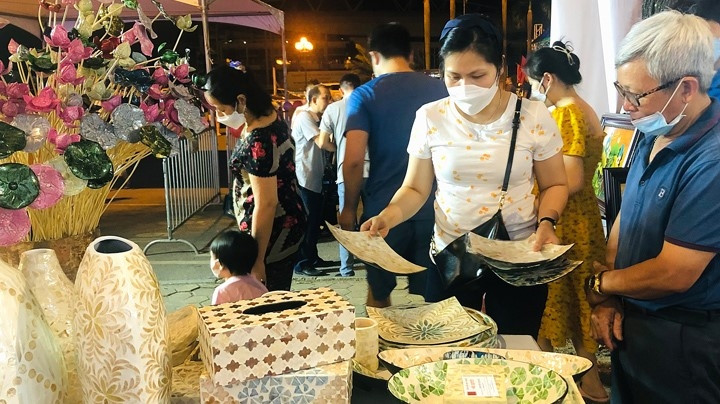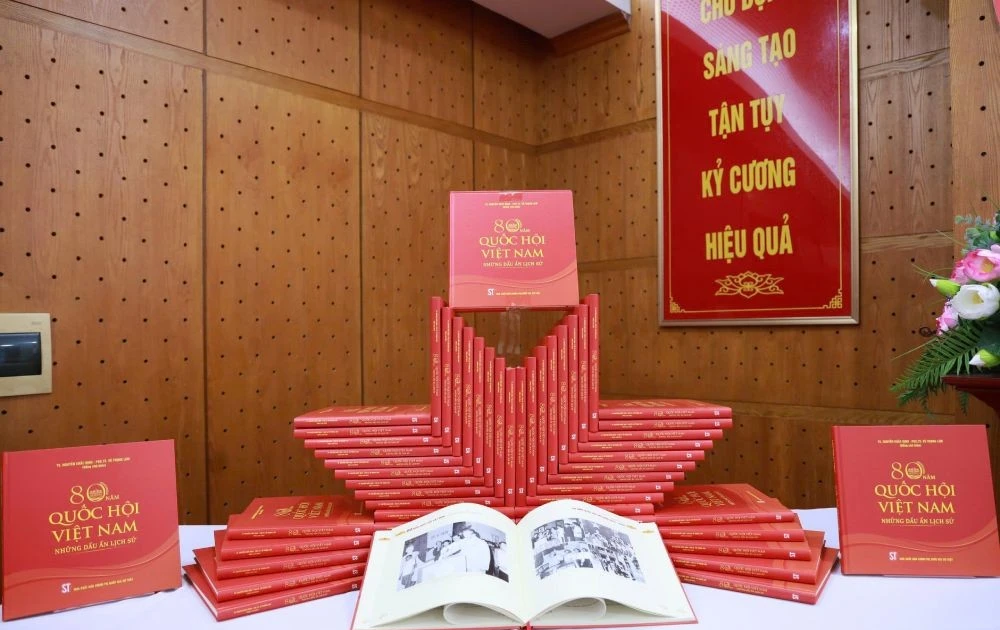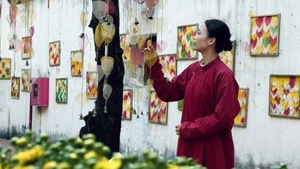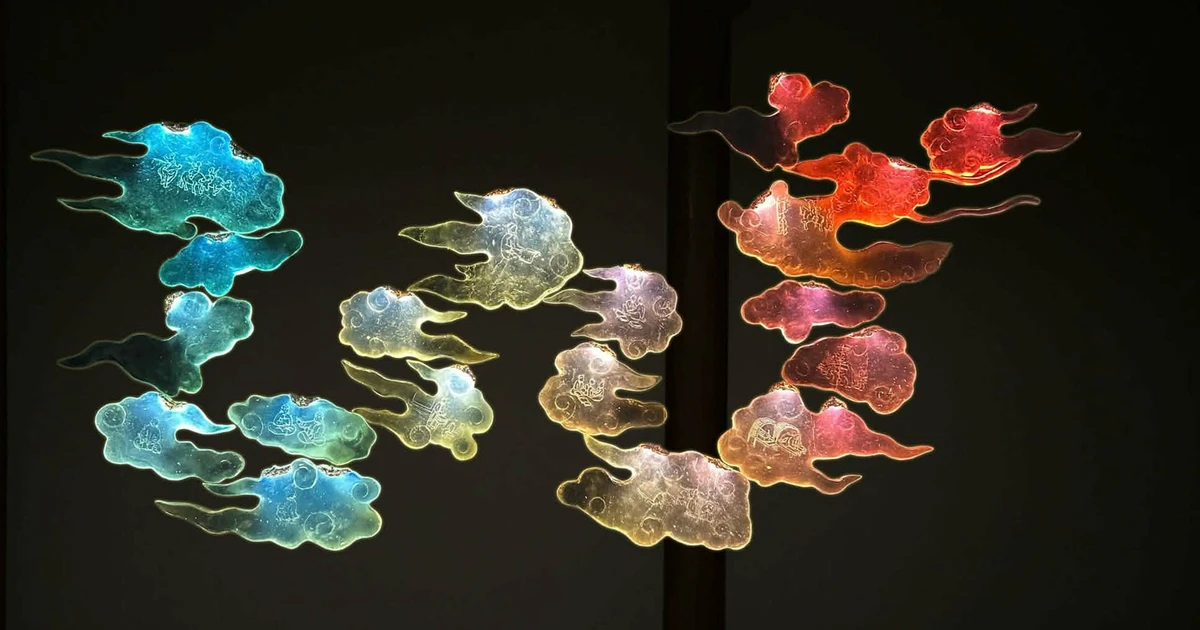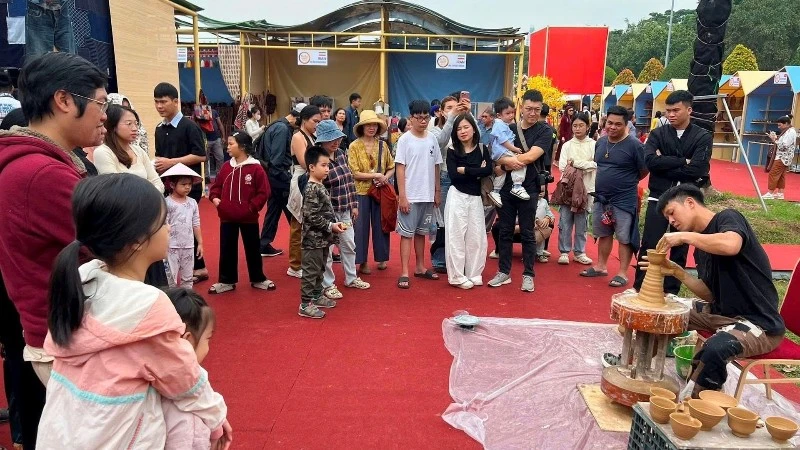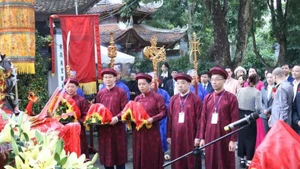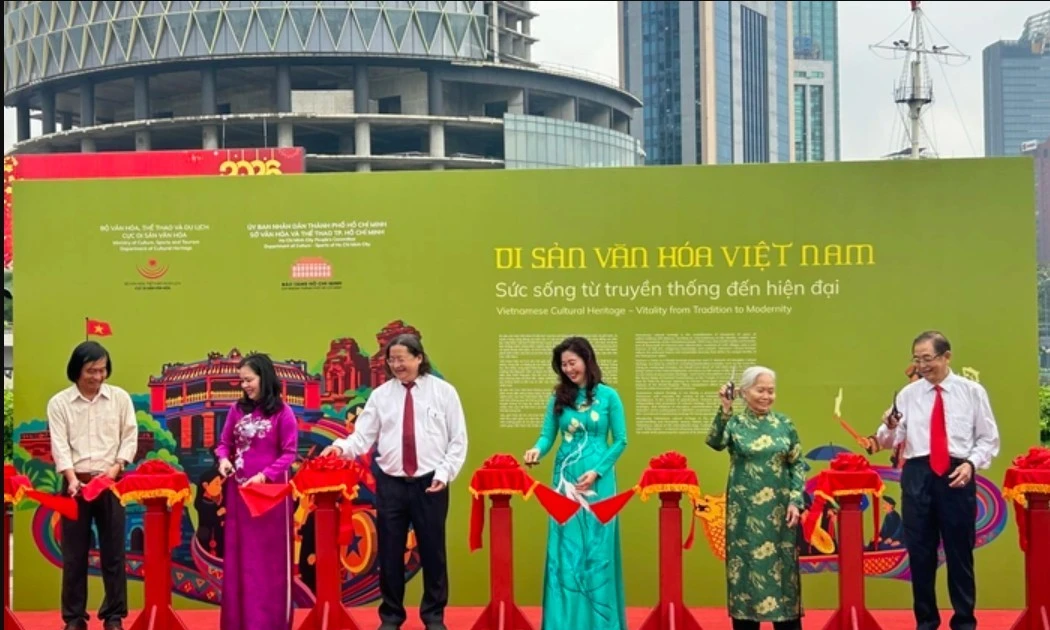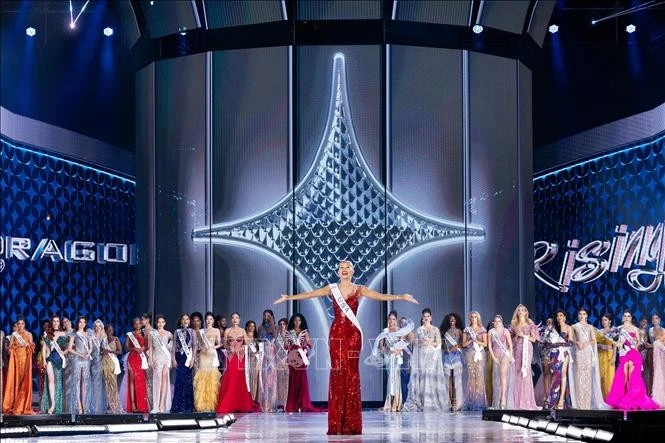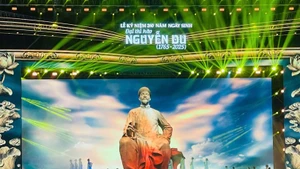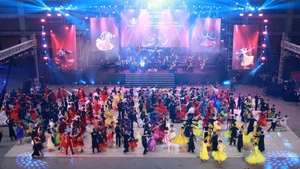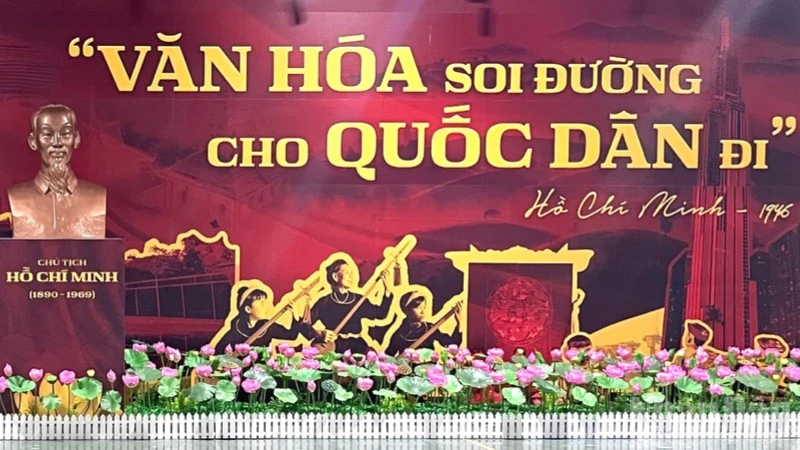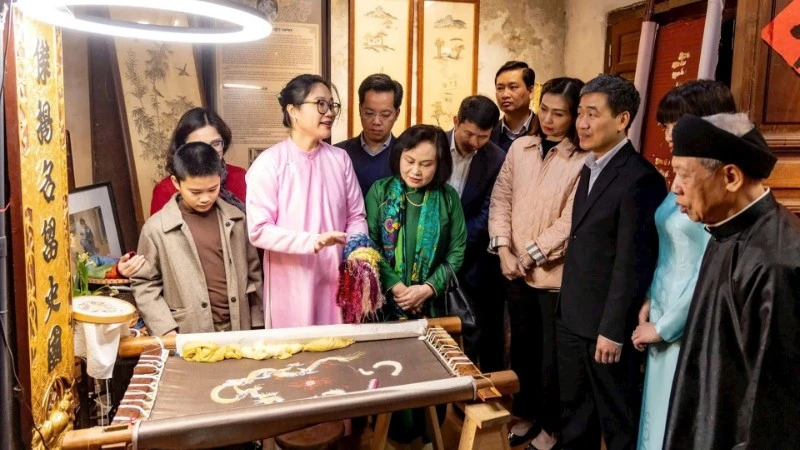Discovering the capital's culinary quintessence
Hanoi is famous for the convergence of many delicious dishes which contains the cultural depth, ingenuity and sophistication of the Trang An people, with many attractive dishes such as Thanh Tri banh cuon (Vietnamese Steamed Rice Rolls), Hanoi pho (traditional Vietnamese noodle soup), bun cha (vermicelli with grilled pork), nem (spring roll), Cha ca (fried fish), gio cha Uoc Le (Uoc Le steamed pork paste and deep-fried cinnamon paste), banh com (sweet cake made of green sticky rice and green beans), and Vietnamese tea.
Hanoi cuisine always attracts both domestic and foreign tourists. In particular, Hanoi is continuously voted by many culinary magazines in the world as one of the cities with the most attractive culinary scene, it is not an exaggeration to consider Hanoi as "the kitchen of the world".
To bring that "kitchen" closer to tourists from all over the world, culinary units in the city have gathered at the 2022 Hanoi Cuisine and Craft Village Festival, contributing to promoting the culinary culture into a unique tourism product of the capital.
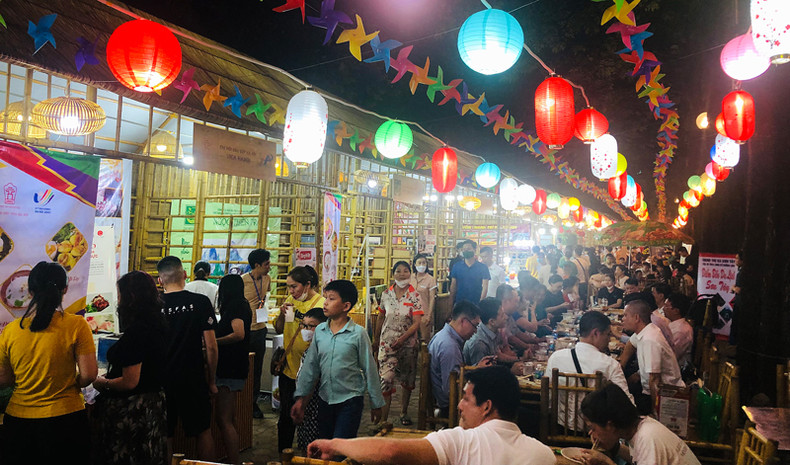 |
The culinary space attracts a large number of people and tourists to participate in the experience.
Hanoi - the land of a "hundred crafts"
Over 1,000 years of civilization, Hanoi has always been the largest cultural centre in the country with tangible and intangible cultural relics. Hanoi now has become an attractive tourist destination. One of its very own attractions, which has a lot of potential to be exploited to attract tourists are the craft villages in Hanoi.
Some craft villages have invested to welcome tourists, such as Bat Trang ceramics village, Van Phuc silk weaving village, Ha Thai lacquer village, and Phu Vinh bamboo and rattan village, visitors to the craft village can find understanding in the culture of the village, watch artisans demonstrate their craft and experience some stages of crafting products, as well as shopping for the villages' products and gifts.
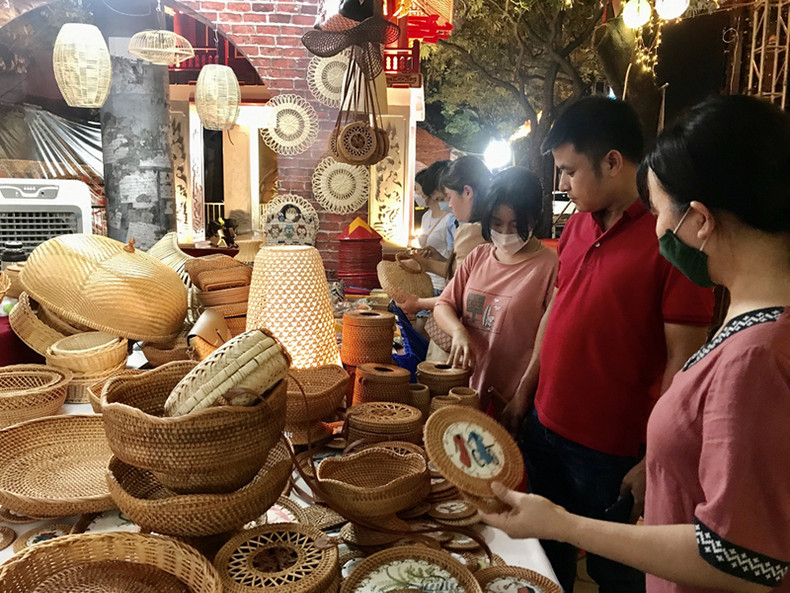 |
Bamboo and rattan handicraft stall in Phu Vinh, Chuong My district.
At the 2022 Hanoi Cuisine and Craft Village Festival, the organising board arranged booths to introduce products of typical craft villages. Besides the introduction of the craft villages' traditional culture, products, tools, and production tools, manufacturing processes were also meticulously introduced to visitors by the artists.
Diversifying activities to promote the capital's typical cuisine and traditional craft villages
The recently concluded 2022 Hanoi Cuisine and Craft Village Festival has contributed to promoting and providing a comprehensive view of Hanoi - a safe, friendly and attractive destination in quality and culinary values, with unique craft villages for domestic and foreign tourists to explore.
Taking place from May 19-23, the 2022 Hanoi Cuisine and Craft Village Festival aims to promote the image of Hanoi as a safe, friendly and attractive destination to tourists in general and attendants of SEA Games 31 in particular.
 |
Delegates open the 2022 Hanoi Cuisine and Craft Village Festival on the evening of May 20.
Nguyen Thi Mai Anh, Deputy Director of the Hanoi Centre for Investment, Trade, and Tourism Promotion (HPA) shared, that the festival was held with the desire to introduce to international friends the quintessence of cuisine and traditional craft village products of the capital.
The 2022 Hanoi Cuisine and Craft Village Festival has contributed to the promotion of special dishes as well as craft villages in the capital area into attractive tourism products, contributing to promoting the local economy; preserving and promoting the value of tangible and intangible cultural heritage in traditional craft villages.
Hanoi has long been famous for the convergence of Vietnamese traditional craft villages’ quintessence. Especially, after Ha Tay province merged into Hanoi in 2008, there have been more craft villages in the capital city. In recent years, besides the types of tourism that have been the strengths of Hanoi, such as cultural and historical tourism, spiritual tourism and ecotourism, craft village tourism has become a catalyst with great prospects to attract visitors. Craft village tourism is considered as a type of tourism with great potential, thanks to its vividness, diversity and richness. Over the past years, many craft villages in Hanoi have taken advantage of the available resources to exploit tourism potential, gaining initial success and becoming attractive destinations for tourists. Bat Trang pottery village and Van Phuc silk village, have been successful in developing craft village tourism, welcoming several tourists during the day, with many visits to production facilities to buy souvenirs.
Each craft village has its cultural values. People come to the craft villages to learn about the history and development of the products and how they bear cultural identity. The localities can skillfully exploit the products’ strengths to meet the visitors’ demands and will become attractive destinations. The development of craft village tourism means sustainable economic development, creating jobs and income for people and improving living standards. The fact shows that with their potential and strengths, the craft villages will make a significant contribution to improving income and living standards for people.
